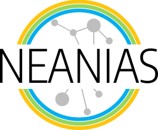Scientific research is a human activity that often implies the production of new or improved measurement tools, leading to the generation of new data that needs to be analyzed, either to corroborate existing theories, or to support the generation of new ones.
Next generation astronomical facilities, for instance, such as the Square Kilometre Array will generate an overwhelming volume of data at a rate that simply cannot be matched by our ability to make sense out of them.
Sometimes, moreover, it is impossible to use supervised techniques to support these researches: the studied phenomena are often object of intense study and classification schemes are still not agreed upon, they might be uncertain, or new data was acquired exactly with the goal of defining a classification scheme that was impossible to come up with using previously available data.
An array of techniques has been devised to support human researchers in the analysis of even large pools of data, even in absence of predefined knowledge structures or interpretation rules supporting this form of analysis. In particular, data visualization and clustering techniques are often employed when trying to make sense of data. But what if we are not talking about large tables but whole datasets of astronomical images? How to arrange a potentially large set of photos in an effective visualization? How to cluster images?
